
Create your own homemade meals, similar to Lean Cuisine, by adhering to the U.S. Department of Agriculture (USDA) recommended daily serving for each food group on the food pyramid. Use low-fat recipes to make preportioned, ready-to-eat meals within the 200- to 400-calorie range, like Lean Cuisine, for breakfast, lunch and dinner. You can cook large amounts of homemade meals at a time to portion, freeze and eat throughout the week, reducing daily cooking time.
Browse the frozen food section at your grocery store to find Lean Cuisine meals that you desire. Write down the main ingredients, serving amounts and calories contained in each meal so you can replicate with a homemade version.
Purchase lean proteins such as lean meat, fish, chicken and beans. Buy grains including rice, bread, pasta and cereal. Add fruits and vegetables and dairy products including eggs, cheese, milk and yogurt to your cart. Choose oils and seasonings low in saturated fats and sodium such as olive oil, safflower oil, pepper and lemon.
Create recipes by adhering to the USDA daily recommended amount of servings and by using Lean Cuisine-inspired meals as guides. Ideas include thin-crust personal pizzas, pita sandwiches and pasta or rice topped with chicken or steak and vegetables. Daily serving recommendations include three to five servings of vegetables, two to four servings of fruit, two to three servings of meat and beans, six servings of grains, two to three servings of dairy and limited use of fats and oils.
Use a measuring cup to portion out 2- to 3-oz. servings of grains including cereal, waffles, pancakes or bread for breakfast meals. Measure a 3 cup cumulative portion of dairy that can include milk, yogurt and butter. Add 1/2 cup to 1 cup of fruit. Reserve 1 cup or two ½-cup portions of fruit to eat as snacks throughout the day.
Cook your lunch and dinner meal ingredients in low-fat oils and seasonings, not exceeding 6 tbsp. of oil per day. Weigh meat and beans on a scale to calculate 2-oz. servings. Add two 2-oz. servings per dinner meal or add a 2-oz portion per lunch meal and a 2-oz. portion per dinner meal, depending on what you decide to eat throughout the course of the day.
Add 1 1/2 cups of cooked or raw vegetables per lunch and per dinner meal. Add 1 to 2 oz. of a grain such as rice, couscous, pasta or bread per lunch and per dinner meal.
Place the measured-out portions of each breakfast, lunch and dinner meal into a container. Seal the lid on the container. Write the number of ounces of each food group contained in each meal on a label.
Affix the label to the container. This helps you calculate the number of calories consumed per meal and in total each day. Labeling also assists you in mixing and matching meals so you intake the USDA daily recommended number of servings per food group.
Place the containers of your homemade Lean Cuisine-style meals in your freezer until you are ready to eat them.
Related Articles

The Soup, Salad & Sandwich Diets

2500 Calorie Menu

How to Make Tortilla Soup
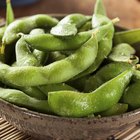
The Nutritional Value of Edamame Beans
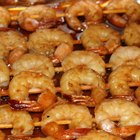
A List of Foods That Contain Choline

Meat & Cheese Diet
Calories in Vegetable Beef Soup
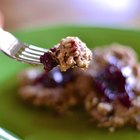
How to Make Goetta in a Crock-Pot

How to Cook Barbecue Deer Meat in a ...
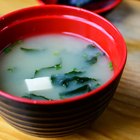
Macrobiotic Breakfast Foods
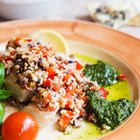
Paleo-Mediterranean Diet

Menu for a Calorie-Restricted Diet

How to Feed a Large Family Healthy ...

How Long Can Frozen Food Sit Out Before ...

How to keep your face smooth and ...
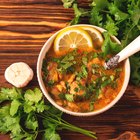
How to Plan a Traditional Jewish ...
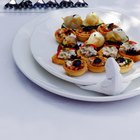
How to Calculate Portions

How to Use Rice Milk for Weight Loss
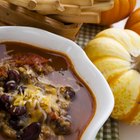
Calories in a Cup of Turkey Chili
Fried Clams Nutrition
References
Writer Bio
Taylor DiVico is a professional songwriter, content writer, fiction novelist and poet with more than 15 years of experience. DiVico holds a B.A. in philosophy from the University of Rhode Island and an M.S. from Syracuse University.
Photo Credits
Jupiterimages/Brand X Pictures/Getty Images